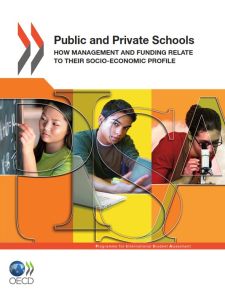Join getAbstract to access the summary!

Join getAbstract to access the summary!
OECD
Public and Private Schools
How Management and Funding Relate to their Socio-Economic Profile
OECD, 2012
What's inside?
Private and public school management has to find a way to work with socioeconomic stratification.
Recommendation
The Organisation for Economic Co-Operation and Development (OECD) helps governments in its 34 member countries address economic, social and environmental issues relating to globalization. OECD’s Programme for International Student Assessment (PISA) monitors student progress across the member nations, which make up almost 90% of the global economy. PISA reports on how the management and funding of private and public schools relates to socioeconomic stratification. Advantaged students often enroll in privately managed schools because their parents believe these schools offer better learning environments, resources and facilities. Disadvantaged students can’t afford private schools. Some nations offer public funding for private schools through vouchers or tuition tax credits. These countries experience less socioeconomic stratification between public and private schools. Though heavy on numerical data, this report provides a thoughtful, thorough analysis of global education. getAbstract recommends it to policy makers, principals, teachers, parents and others interested in education.
Summary
About the Author
The Organisation for Economic Co-Operation and Development (OECD) is an international organization of 34 nations dedicated to helping governments address economic, social and environmental issues relating to globalization.


























Comment on this summary